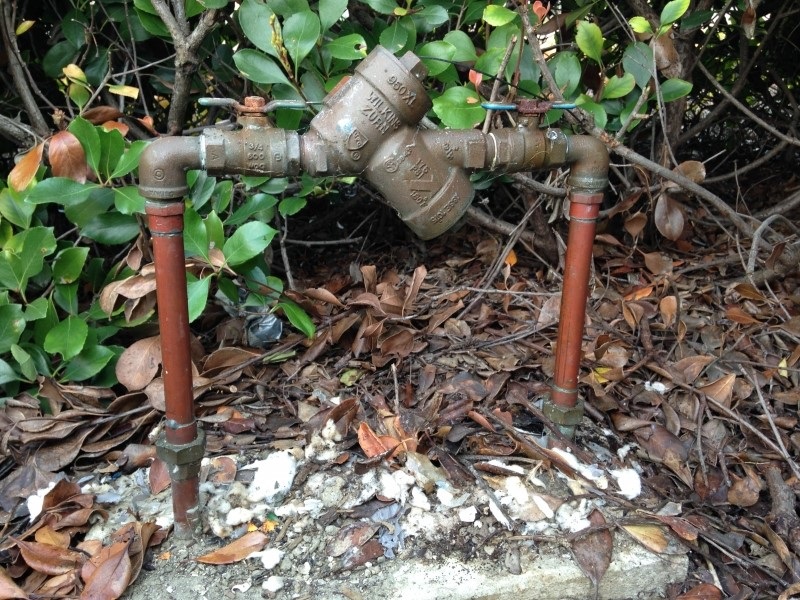Water quality

Menlo Park Municipal Water’s (MPMW) drinking water is supplied by the Hetch Hetchy regional water system, operated by the San Francisco Public Utilities Commission (SFPUC).
The Hetch Hetchy system provides high quality drinking water to over 2 million people in the Bay Area. The SFPUC maintains a watershed control program that effectively limits or eliminates potential contamination to the water supply. The Hetch Hetchy water supply meets all federal and State criteria for watershed protection, disinfection treatment, bacteriological quality and operational standards, allowing the SFPUC and Menlo Park Municipal Water to provide customers with exceptionally high quality drinking water.
MPMW routinely monitors the distribution system for bacteriological quality, chlorine residual, general physical parameters and disinfection by-products. Regular testing is completed as required for lead and copper, samples are taken each week for bacteriological analysis.
Annual water quality reports
2024 Water quality report
2023 Water quality report
2022 Water quality report
2021 Water quality report
Annual water flushing program
MPMW conducts an annual water main flushing program as part of scheduled preventative maintenance to ensure good water quality with a focus on dead-end water main lines. This flushing program typically takes place from September through October, as needed. Dead end water mains are often found at the end of cul-de-sac streets. Dead end water mains generally do not provide enough flow to keep water fresh and chlorine levels present. While flushing, staff will test for levels of chlorine to determine if that area needs to be flushed more frequently.
The process of water flushing may cause some disruptions, such as temporary reduction in water pressure or brown water. These temporary conditions are normal during flushing and are not a danger to the public. Customers can flush their home's water lines by running the indoor and outdoor faucets for one to three minutes until the water is clear. Consider repurposing this water to irrigate your plants or garden.
Please report any persistent issues with water pressure or water quality to Menlo Park Municipal Water by calling 650-330-6750.
Lead service line inventory
Per the Lead and Copper Rule Revisions (LCRR) published by the United States Environmental Protection Agency (U.S. EPA), all water systems are required to complete a Lead Service Line Inventory (LSLI) by October 16, 2024, of both utility-owned (from the water main to water meter) and privately-owned (from the water meter to the property) service lines, to identify lines that may contain lead.
MPMW completed its LSLI in accordance with the EPA's LCRR. No lead or galvanized service lines were identified. MPMW's LSLI was approved by the State Water Resources Control Board Division of Drinking Water.
Non-Lead Service Line Material Designation Statement
MPMW has completed the initial lead service line inventory required by the U.S. EPA’s Lead and Copper Rule Revisions. MPMW reviewed all applicable sources of information including:
- Historical records including permits, distribution maps, meter installation records, standard operating procedures, etc.
- As part of the Advanced Metering Infrastructure (AMI) project, approximately 74% of all customer-owned service lines were inspected to verify the material of the service line. All service lines inspected were verified as non-lead.
- MPMW continues to document service line material information obtained from normal operations such as service line maintenance or future water meter replacements and will update the initial inventory accordingly.
The results of the inventory are available upon request. Please contact us at water@menlopark.gov or 650-330-6750.
Water sampling stations
Across the MPMW service area, there are multiple water sampling stations that are used to provide representative water quality data. MPMW staff tests the water at random sampling sites on a weekly basis. MPMW does not collect water samples past the water meter on private property. This routine monitoring program is a critical component of MPMW’s regulatory obligations and provides assurance that the distribution system consistently meets drinking water quality requirements.
For more information about water quality and sampling results please review the Water Quality Reports linked at the top of this webpage.
Backflow prevention (cross connection control) program
Menlo Park Municipal Water’s backflow prevention (cross connection control) program protects the public drinking water supply by requiring the installation and annual testing of backflow devices. These devices are installed at service points, typically near the water meter and allow water to flow only in one direction - out of MPMW’s drinking water system and not back in. Properly installed and maintained backflow prevention assemblies protect the public water system from contamination. Assemblies are typically required for commercial, industrial, irrigation, fire, and new residential water connections per California Water Code Title 17.
For important information about backflow devices, who needs them, where to install them, and testing and maintenance requirements, refer to Menlo Park Municipal Water's backflow prevention (cross connection control) device installation guidelines(PDF, 241KB).
San Mateo County Environmental Health manages Menlo Park Municipal Water’s backflow prevention (cross connection control) program. The County establishes the list of certified testers, mails notifications to water account holders for annual testing, maintains records and performs site surveys as needed. For a list of approved backflow prevention assemblies, certified testers and frequently asked questions, visit the County’s website or contact the County at 650-372-6200.
Backflow prevention assembly Backflow prevention map


Contact us
Noticed something that needs fixing in your neighborhood such as a damaged street sign, pothole or a streetlight outage? Report it using ACT Menlo Park.
Billing and customer service
For account information, billing questions or to make a payment
Mon-Fri, 8:00 a.m. - 5:00 p.m.
menlopark.util360.com
844-360-7733
Email
Water emergencies
Water emergencies include leaks, main breaks or quality concerns.
Mon-Thurs, 7:30 a.m. - 4:30 p.m.
Open Fridays, 7:30 a.m. - 3:30 p.m.
Closed every other Friday(PDF, 131KB)
650-330-6750
After-hours, closed Fridays or weekends:
650-330-6317
Other water-related issues
650-330-6750
Email
Report water waste